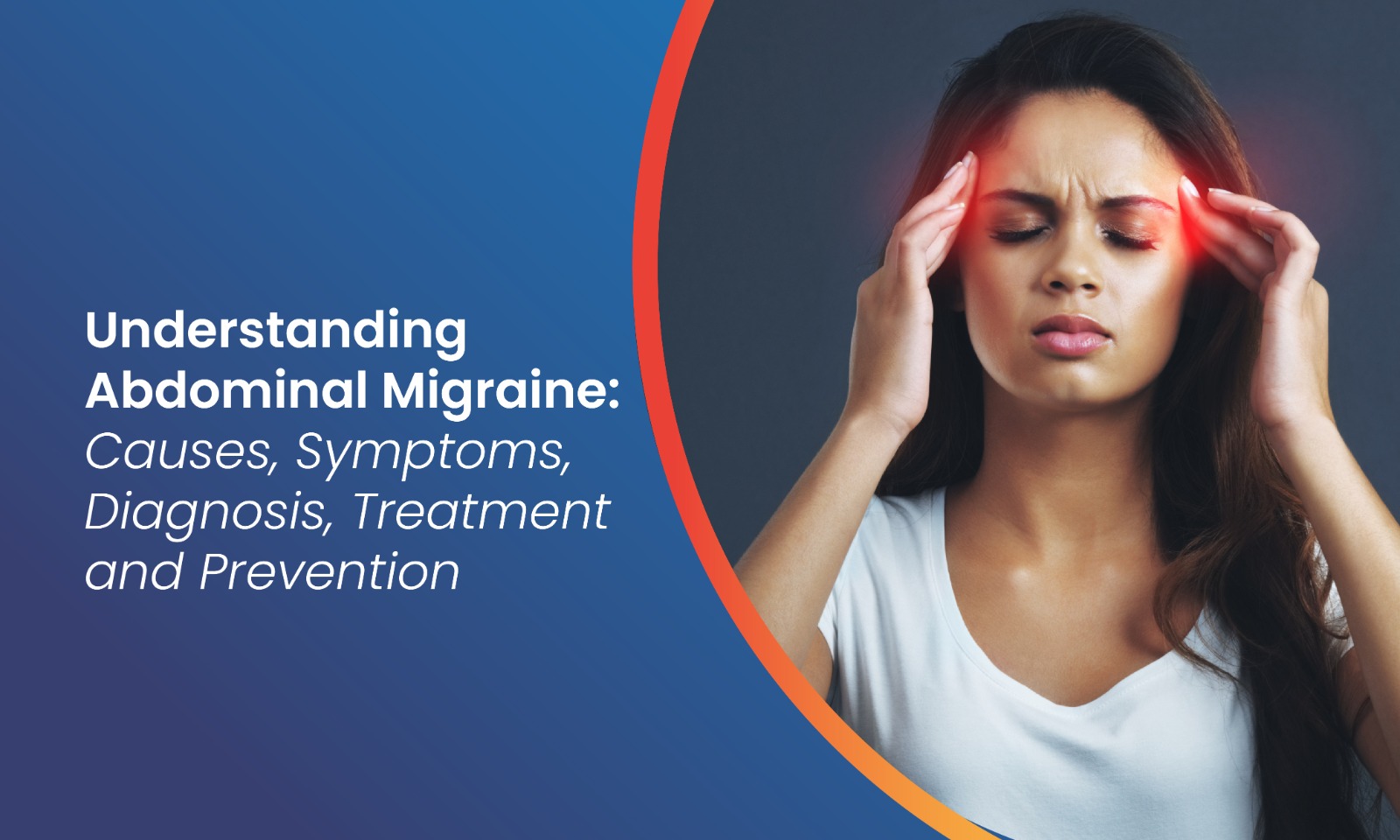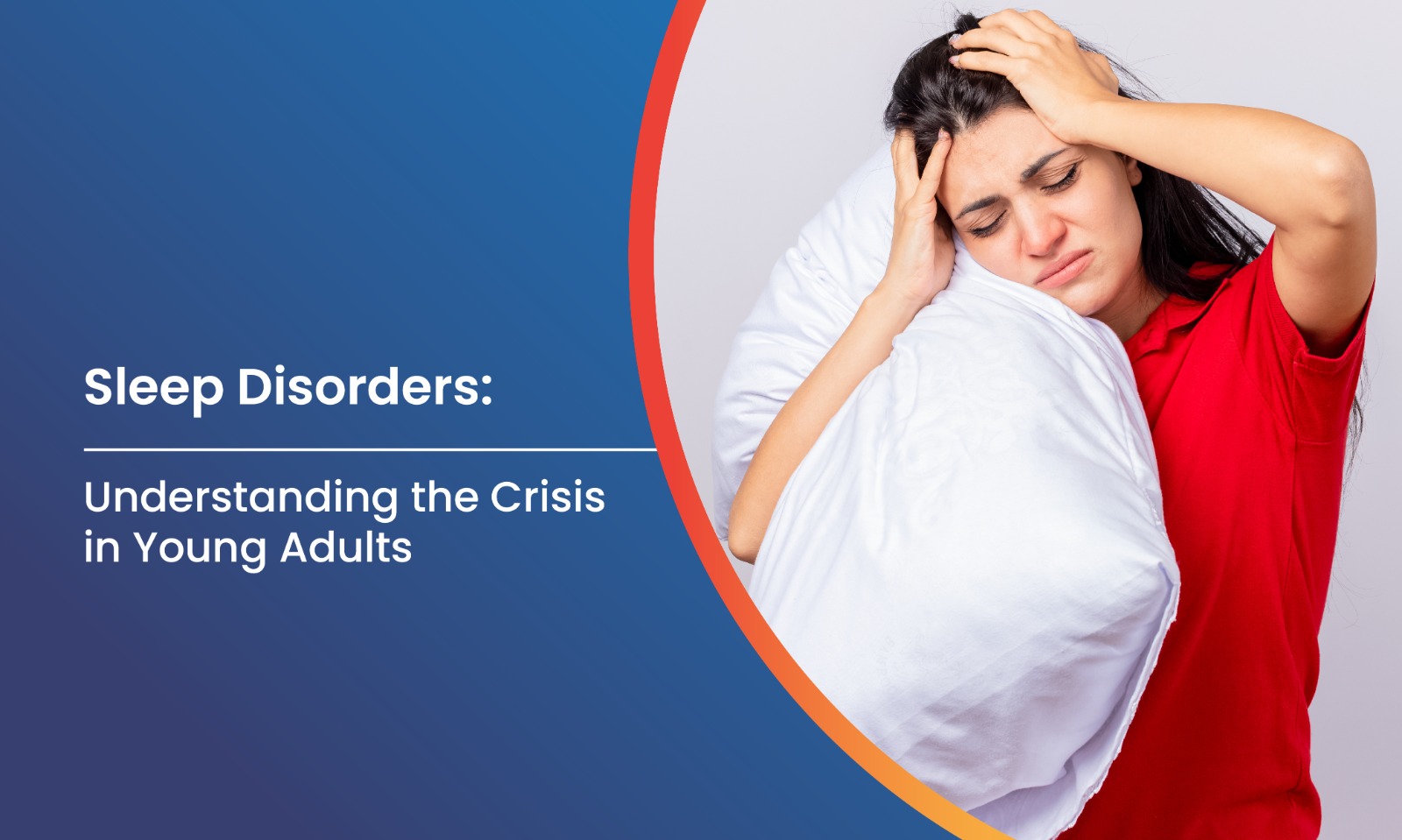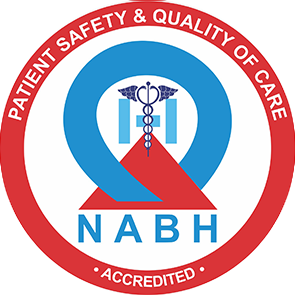Understanding Abdominal Migraine: Causes, Symptoms, Diagnosis, Treatment, and Prevention

Abdominal migraine is a confusing and often misunderstood condition, causing significant distress for children and adults alike. It causes repeated times of strong stomach pain that can make you miss school or work and disrupt your daily routine. Understanding its causes, symptoms, diagnosis, treatment, and prevention is essential for effective management and long-term relief.
Even though it's less well-known than regular migraines, abdominal migraine has many similar triggers and causes. It mainly affects children, but it can also happen in adults. Knowing about it early is important. This article explains everything about abdominal migraine to help people and families get help quickly and find ways to prevent and treat it.
Table of Contents
- What Is Abdominal Migraine?
- Causes and Risk Factors
- Common Symptoms
- Diagnosis: How Is Abdominal Migraine Identified?
- Treatment Options
- Prevention Strategies
- Living with Abdominal Migraine: Tips and Support
- FAQs
What Is Abdominal Migraine?
Abdominal migraine is a neurological condition marked by recurrent episodes of moderate to severe abdominal pain, often centred around the belly button. Unlike typical migraines, which primarily cause headaches, abdominal migraine manifests as stomach pain and is frequently accompanied by nausea, vomiting, and loss of appetite. The condition is most prevalent in children aged 3 to 10, but can persist into adulthood or even begin later in life.
- Abdominal migraine is considered a type of migraine variant, sharing similar triggers and mechanisms with regular migraine headaches.
- Triggers typically last from one hour to three days and may interfere with normal activities.
- Between triggers, individuals are usually symptom-free and able to function normally.
- The condition is more common in children with a family history of migraines or those who have experienced classic migraines themselves.
- Abdominal migraine is sometimes confused with other gastrointestinal or functional disorders, making accurate diagnosis essential.
- While most children outgrow abdominal migraine, many go on to develop migraine headaches as they age.
Causes and Risk Factors
The exact cause of abdominal migraine remains unclear, but research suggests a complex interplay between genetics, the gut-brain axis, and environmental factors. Several triggers and risk factors have been identified, contributing to the onset and recurrence of episodes.
Abdominal migraine is believed to result from hypersensitivity in the nervous system, particularly involving neurotransmitters like serotonin. Disruptions in the gut-brain axis, genetic predisposition, and certain lifestyle factors can all play a role.
- Genetic predisposition: A family history of migraines or abdominal migraines increases risk.
- Gut-brain axis disturbances: Abnormal communication between the gut and brain may trigger symptoms.
- Neurotransmitter imbalances: Changes in serotonin and histamine levels are thought to contribute.
- Environmental triggers: Stress, poor sleep, skipping meals, dehydration, and exposure to bright lights are common triggers.
- Dietary factors: Foods containing chocolate, caffeine, MSG, processed meats, and certain additives may provoke episodes.
- Psychosocial stress: Anxiety, emotional distress, and major life changes can increase vulnerability to attacks.
Common Symptoms
Recognizing the symptoms of abdominal migraine is crucial for timely diagnosis and effective management. The hallmark feature is recurrent, moderate to severe abdominal pain, typically centred in the midline or around the belly button. These episodes are often accompanied by other symptoms that can mimic gastrointestinal illnesses.
Symptoms of abdominal migraine can vary in intensity and duration but often share the following characteristics:
- Abdominal pain: Dull, sore, or cramping pain centred around the navel, lasting from one to seventy-two hours.
- Nausea and vomiting: Many individuals experience queasiness and may vomit during an attack.
- Loss of appetite: A marked decrease in appetite or refusal to eat is common.
- Pallor: Noticeable paleness or dark circles under the eyes may appear.
- Fatigue and lethargy: Tiredness, drowsiness, or withdrawal from usual activities.
- Other migraine-like features: Some may experience sensitivity to light or sound, headache, or visual disturbances.
- Symptom-free intervals: Periods between attacks are typically free of symptoms.
Diagnosis: How Is Abdominal Migraine Identified?
Diagnosing abdominal migraine can be challenging, as there are no specific laboratory or imaging tests to confirm the condition. Instead, healthcare providers rely on a detailed medical history, symptom patterns, and exclusion of other causes of abdominal pain.
Diagnostic criteria—such as those outlined by the International Classification of Headache Disorders (ICHD-3) and the Rome IV criteria—are used to guide diagnosis. These criteria focus on the frequency, duration, and nature of symptoms, as well as associated features.
Clinical history: Assessment of the type, frequency, and duration of abdominal pain, along with associated symptoms and family history.
Symptom criteria: Recurrent episodes of moderate to severe midline or periumbilical pain lasting one to seventy-two hours, with at least two of the following: pallor, nausea, vomiting, anorexia, or headache.
Exclusion of other conditions: Rule out gastrointestinal, metabolic, and surgical causes such as appendicitis, irritable bowel syndrome, peptic ulcer disease, or infections.
Physical examination: Typically normal between episodes, but may show pallor or mild tenderness during attacks.
Alarm symptoms: Presence of blood in stool, persistent vomiting, weight loss, or growth failure may warrant further investigation for other causes.
Treatment Options
Management of abdominal migraine focuses on relieving acute symptoms during attacks and preventing future episodes. Treatment is tailored to the individual’s age, symptom severity, frequency of attacks, and response to previous therapies.
There is no single cure, but a combination of medications, lifestyle modifications, and trigger avoidance can provide significant relief.
- Acute/abortive treatment: Resting in a dark, quiet room; simple analgesics such as paracetamol (acetaminophen) or ibuprofen; anti-nausea medications; and, in some cases, triptans (e.g., sumatriptan) for severe attacks.
- Preventive (prophylactic) medications: For frequent or severe triggers, options include cyproheptadine (antihistamine), propranolol (beta-blocker), pizotifen (serotonin antagonist), flunarizine (calcium channel blocker), and valproic acid (antiepileptic).
- Lifestyle modifications: Maintaining regular sleep, meal, and activity schedules; stress management; and ensuring adequate hydration.
- Trigger identification and avoidance: Keeping a symptom diary to track and avoid known triggers such as specific foods, stressors, or environmental factors.
- Education and support: Providing reassurance to patients and families, and involving them in treatment planning to improve adherence and outcomes.
Prevention Strategies
Preventing abdominal migraine episodes requires a proactive approach, focusing on lifestyle adjustments and trigger management. While not all episodes can be prevented, these strategies can reduce their frequency and severity.
Effective prevention involves collaboration between patients, families, and healthcare providers to develop individualized plans.
- Regular routines: Establish consistent sleep, meal, and activity schedules to minimize physiological stress.
- Healthy diet: Eat balanced, fiber-rich meals and avoid known dietary triggers such as chocolate, MSG, processed meats, and certain food additives.
- Stress management: Practice relaxation techniques, mindfulness, and coping strategies to reduce emotional stress.
- Adequate hydration: Ensure sufficient fluid intake throughout the day.
- Physical activity: Encourage regular exercise appropriate for age and ability.
- Symptom tracking: Maintain a diary to identify patterns and triggers, facilitating targeted prevention efforts.
Living with Abdominal Migraine: Tips and Support
Living with abdominal migraine can be challenging, especially for children and their families. The unpredictable nature of attacks may impact school attendance, social activities, and emotional well-being. However, with the proper support and management, most individuals can lead active, fulfilling lives.
Practical tips for managing life with abdominal migraine include:
- Open communication: Encourage children to express their symptoms and feelings, and involve them in their care plan.
- School support: Work with teachers and school nurses to develop an action plan for managing episodes during school hours.
- Family involvement: Educate family members about the condition to foster understanding and support.
- Psychological support: Consider counselling or cognitive-behavioural therapy for children experiencing anxiety, depression, or significant distress.
- Peer support: Connect with support groups or online communities for shared experiences and advice.
- Regular follow-up: Schedule periodic check-ins with healthcare providers to monitor progress and adjust treatment as needed.
FAQs
Q1: Is abdominal migraine the same as a regular migraine?
No, abdominal migraine primarily causes stomach pain rather than headache, but both conditions share similar triggers and mechanisms.
Q2: Who is most at risk for abdominal migraine?
Children aged 3 to 10, especially those with a family history of migraines, are most at risk, though adults can also be affected.
Q3: How is abdominal migraine diagnosed?
Diagnosis is based on clinical criteria, symptom patterns, and exclusion of other causes through history, examination, and sometimes additional tests.
Q4: Can abdominal migraine be cured?
There is no definitive cure, but most children outgrow the condition, and symptoms can be managed effectively with treatment and lifestyle changes.
Q5: What are the main triggers for abdominal migraine?
Common triggers include stress, poor sleep, skipping meals, dehydration, certain foods (chocolate, MSG, processed meats), and bright lights.
Q6: What should I do during an abdominal migraine attack?
Rest in a quiet, dark room, use pain relief as prescribed, stay hydrated, and seek medical advice if symptoms are severe or persistent
















